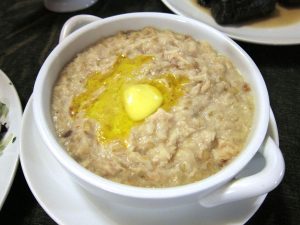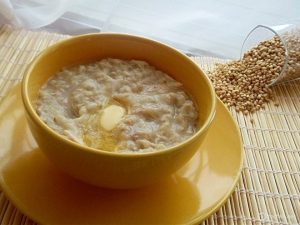Harisa is very special Armenian dish. Armenian people make it from dried wheat and fat-rich meat. Harisa takes extremely long cooking process. Like other traditional dishes, the time taken for preparation is part of its cherished value.
Harisa became a marker of Armenian national identity in ethnically mixed communities. In the Oriental Cookbook, published in the US about one hundred years ago, it was reported: “Harisa to Armenians is what pilaf is to Turks. That is their national dish.”
The origin of Harisa
- Harisa
- Harisa
According to Armenians, Saint Gregory the Illuminator was offering a meal of love and charity to the poor people. He advised: “Harekh! Stir it!” Thus, the name of the dish came from the saint’s own words. However, the Armenian church no longer gives Harisa as an offering.
Some experts say that it must be stirred as soon as the wheat is half-cooked. That is considered ready when the wheat kernels are easy to mush. But other experts say that it should not be stirred with salt until the very end of the cooking process.
When Harisa is served, it is dished into bowls and garnished with melted butter. Harisa is a very filling and rich dish. After eating it, you won’t be hungry again for a long time.
Harisa is not a uniquely Armenian dish. For example, in Iran it is called Haleem. It is considered an early-morning meal.
Where and when is eating Harisa?
In Armenia nowadays Harissa is made once a year in Musa Ler mountain. Every third Sunday of September lots of people is gathering in Armavir( Armenian region), singing patriotic songs, dancing to celebrate the victory of Musa Ler resistance. They also pay tribute to all innocent Armenians killed during genocide by Ottoman Turks.
What will you need?
1.
- Homemade chicken- 1.2-1.5kg;
- Dzavar- Armenian grains, made from a special mountain grained wheat-0.5kg;
- Water- 5cups for 1 cup Dzavar;
- Salt to taste;
- Butter.
How must you do it?
Sort through, was and soak Dzavar cold water for a couple of hours. Wash the whole chicken, put it in a saucepan, add the soaked Dzavar. Then, pour cold water so that it covers the contents of the saucepan for4-5 fingers. Bring to boiling, occasionally removing the foam, and cook until grains and chicken are cooked.
Then remove the chicken from the porridge. Whisk the last with a blender. Put meat back into the porridge while constant stirring, cook until thick. Salt to taste. And finally, Harisa is ready.
2.
- A whole chicken or 700 grams of deboned chicken plus two cups of chicken stock;
- 2 cups of whole wheat kernels, which are soaked overnight, if possible;
- Water- 6-10 cups;
- Butter;
- Ground paprika-2 tablespoons or ground cumin- 2 teaspoons.
How must you do it?
If using a whole chicken, boil the carcass in the water on medium heat until cooked. You must take it from water, then wait till chicken cools down and finally remove flesh, discarding skin and bones. Shred flesh. During cooking the chicken, save the stock which you made. If you use roast chicken while cooking, cut the chicken into thin strips. Combine the wheat, chicken and chicken broth in a large pot. Add enough water to have about 8 cups of liquid in the pot. Simmer over a very low heat if it becomes very soft. If you soak the wheat overnight it will take you two hours, otherwise, if not soaked, it will take 4 hours. Stir occasionally, especially towards the end when there’s a danger of it sticking.
To make tastier, add salt and pepper. You can also add cumin or paprika. And finally, the traditional stage is to vigorously stir the dish until it becomes smoother. And then, Harisa is ready.
What does it taste like?
As Armenian peoples cook and eat, they listen to some lovely Armenian traditional music, play a wind instrument called a duduk. It is sad, the solemn sound is truly haunting, and make Armenians feel like we’ve been transported back to a windswept Caucasian hill 2000 years ago. It tastes very wholesome and rustic – just like it must have tasted during Biblical times.
So don’t put off a little unusual texture, the simplicity of the ingredients, or the long cooking time. You can make a ton of it in one go, and freeze the leftovers. It is amazing that the variations on this dish don’t appear in more national cuisines. In any case, this delicious porridge is all the rage after Heston Blumenthal, so perhaps Armenian cuisine will suddenly become ultra-trendy as well?












Leave a Comment